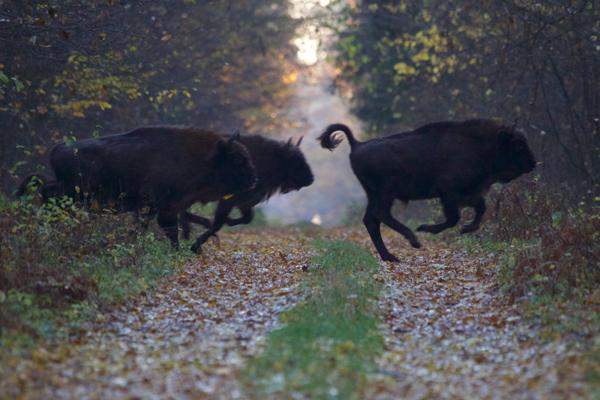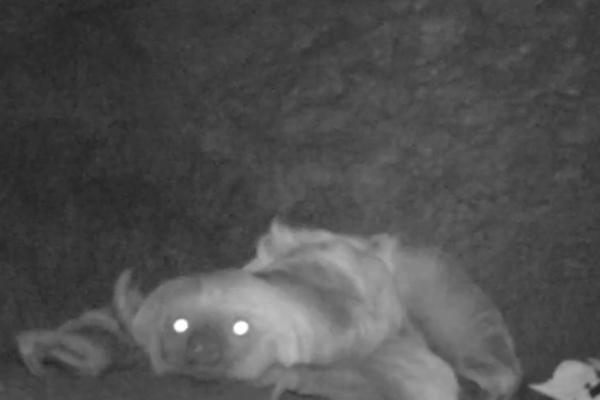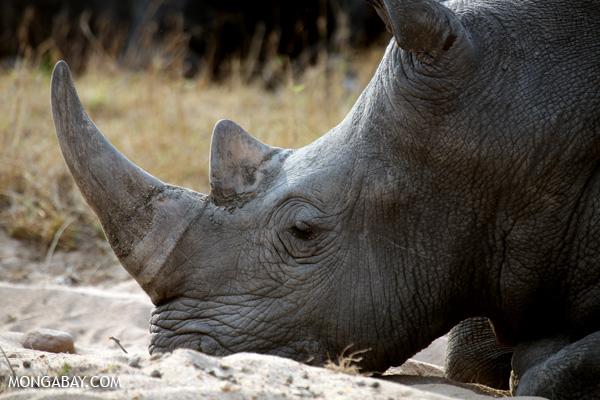Researchers working in Kerinci Seblat National Park have captured a remarkable image of a mother Asian golden cat (Catopuma temminckii) carrying her young in her mouth. The image was taken in mid-2014 as reported by Mongabay Indonesia by the Sumatran Tiger Research Team.
Asian golden cats are just one of five wild cat species found in Kerinci Seblat National Park. The park is also home to the Sumatran tiger (Panthera tigris sumatrae), the Sunda clouded leopard (Neofelis diardi), the marbled cat (Pardofelis marmorata), and the leopard cat (Prionailurus bengalensis).
The Asian golden cat is a medium-sized feline, around two to three times heavier than a domestic cat. It ranges across Southeast Asia and is currently listed as Near Threatened by the IUCN Red List. Like many other predators, the cat is threatened in the region by deforestation, prey decline, snaring, and the illegal trade in cat bones and parts. In Indonesia there is a thriving trade in these wild animals over the Internet, according to Mongabay Indonesia. Worse still, Sumatra has one of the highest deforestation rates on the planet.
Still, Asian golden cats remain much less threatened than Sunda clouded leopard and marbled cat (both listed as Vulnerable), and, of course, Sumatran tigers which are considered Critically Endangered.
“Asian golden cats are animals that are generalists, which means more adaptive to changes in existing land cover,” Iding Achmad Haidir, a researcher studying smaller cats who uploaded the photo, told Mongabay Indonesia.
Haidir further noted that researchers have found that Asian golden cats and Sunda clouded leopards generally avoid each other, i.e. where there are a lot of Asian golden cats there are few Sunda clouded leopard and vice versa. But in areas with large prey densities, these two species appear to live side-by-side and even share their territory with the island’s top predator, the Sumatran tiger.
The research is a collaboration between Kerinci Seblat National Park, WildCRU Oxford University, the Clouded Leopard Project, Point Defiance Zoo & Aquarium, Fauna & Flora International (FFI), and the Rufford Foundation.
This article was written by Jeremy Hance, a contributing writer for news.mongabay.com. This article was republished with permission, original here.



